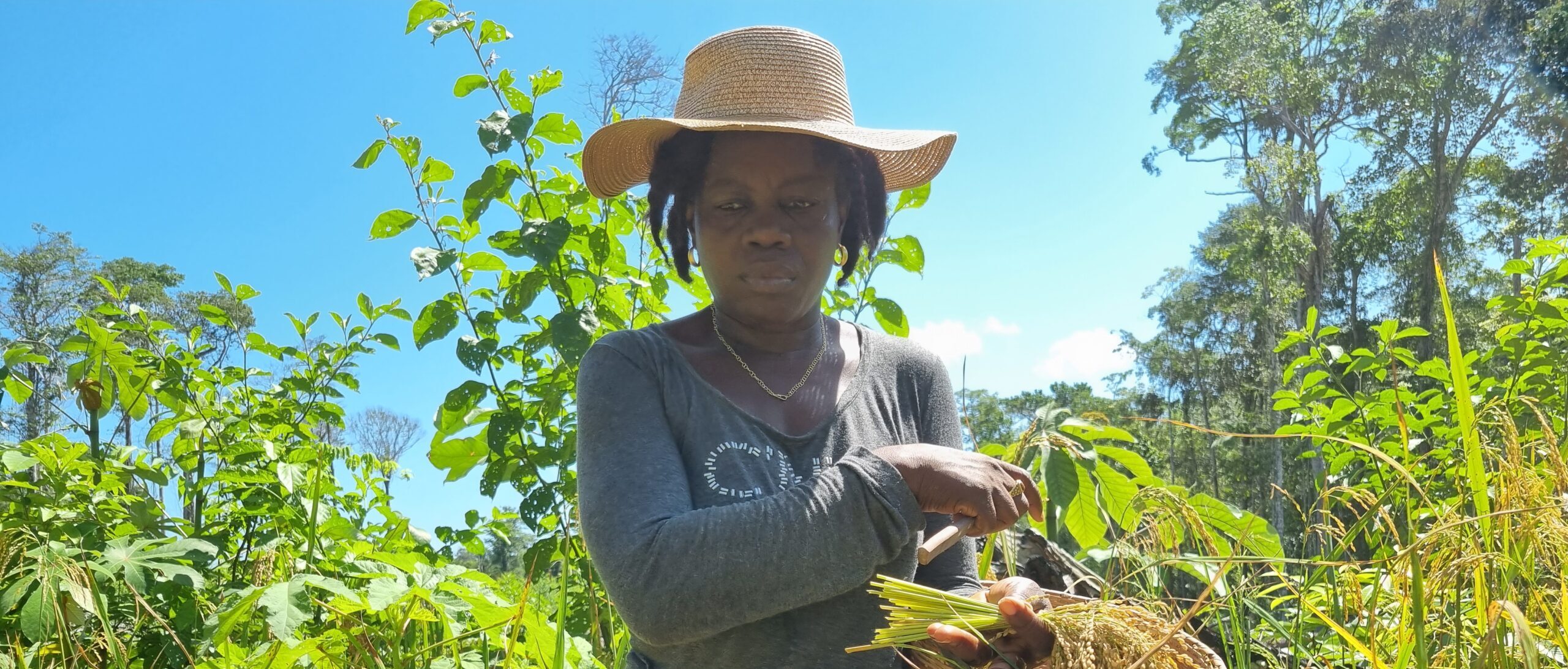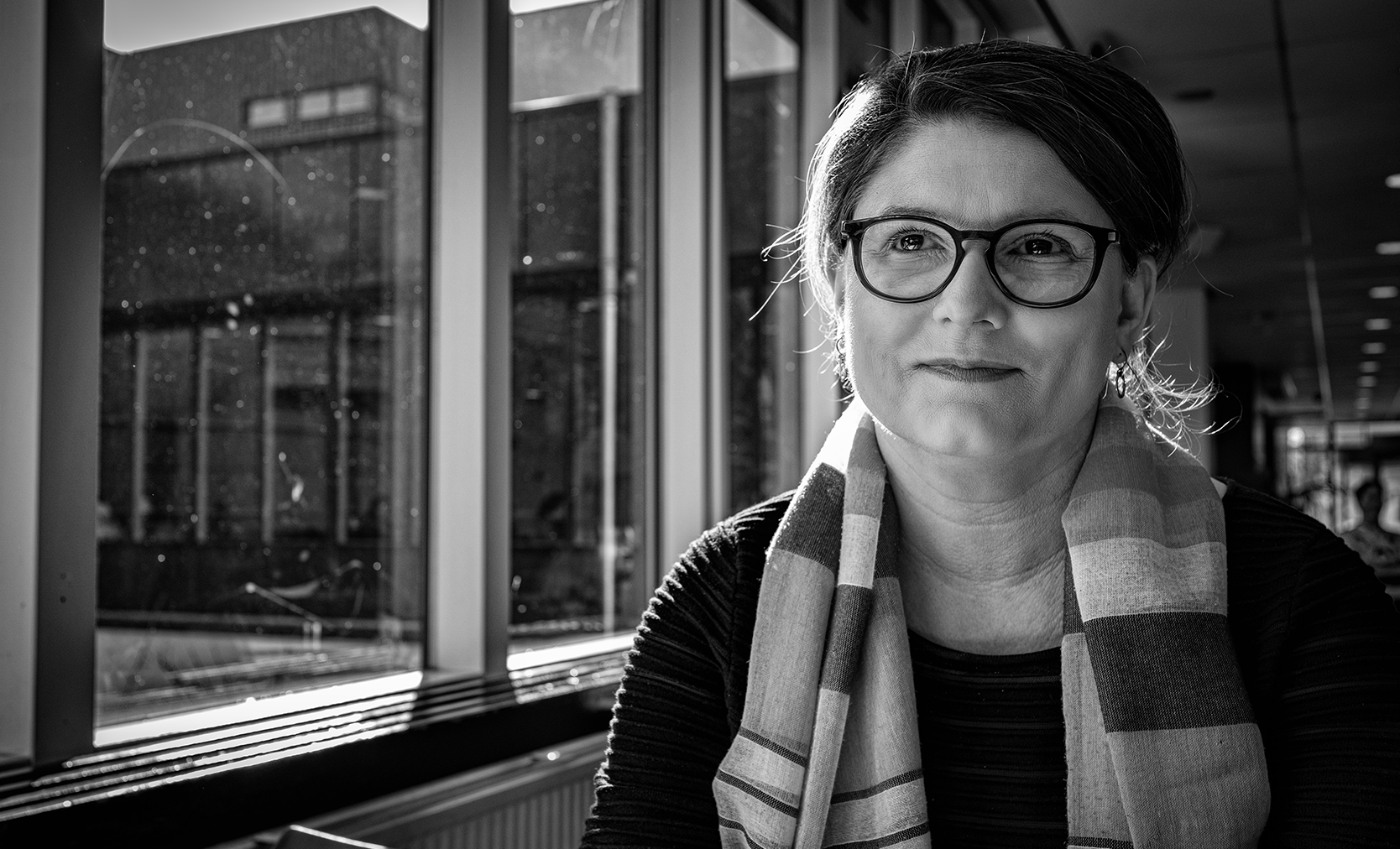The maroons of Suriname grow an incredible range of rice varieties. PhD candidate Nicholaas Pinas presented a picture of their rice culture.
The Dutch diet regularly includes a helping of white or brown rice. We also have basmati, pandan and jasmine rice, but that is about the limit of Dutch people’s adventure with rice. To be honest, even Nicholaas Pinas, who is from Suriname, hadn’t expected such huge diversity when he started four years ago on his investigations into the rice culture of the maroons in his country of origin.
The maroons are the descendants of African slaves who managed to escape. Pinas himself comes one of Suriname’s six maroon communities. ‘I am a member of the Okanisi community,’ he explains. ‘Both my parents come from the Cottaki area, around a small river in north-eastern Suriname.’ However, Pinas was born and brought up in the city of Paramaribo. ‘In the school holidays, I would often visit my grandmother in Moengo. I regularly helped harvest the rice with my cousins.’ He laughs. ‘I had to, because my grandmother would never leave you alone at home. It was hard work. Temperatures can climb as high as 40 degrees in August and September.’
300 varieties
In his research, Pinas and his PhD supervisor Tinde van Andel (professor by special appointment of Ethnobotany) interviewed 106 maroons in four communities in Suriname and neighbouring French Guyana. They also collected plants and grains from more than 300 different varieties of rice. At least, that’s what they thought. Pinas: ‘We had multiple samples for some varieties, and further investigations by the Surinamese rice institute (SNRI/ADRON) revealed that there were in fact over 500 different varieties.’
The maroons tend to think of rice as female
That huge variation is the result of more than 300 years of cultivation, adaptation to local conditions and crossing. Some maroons grow up to 20 different varieties. For good reason. As Pinas explains, it is a way of spreading risk. ‘It’s a management strategy. You have water-loving plants that do well in wet years and you have sun-loving varieties that can cope with dry conditions. Growing several varieties lets you make sure there is always enough to eat, regardless of whether it’s a wet year or a dry year.’
Women’s work
The maroons farm on a small scale to provide enough food for themselves. They measure the harvest not in weight but in time: how long a family can live off it. Their rice fields are not neatly raked plots; they use a slash-and-burn method and a field is only used for two years at most. Yields are small compared to commercial rice cultivation. But that depends on how you look at it. Pinas: ‘Commercial rice cultivation in Suriname yields six to seven tons per hectare, whereas you get barely one ton with the same rice variety in a maroon field. However, some of the maroons’ varieties yield more than two tons.’ That is demonstrated by a comparative study in which two commercial cultivars were grown using traditional methods alongside a large number of traditional rice varieties. The relatively high yield shows how the rice plants have adapted to the environment.
In addition to rice and information about how it is grown, Pinas collected a lot of stories. Rice is more than just food for the maroons; the crop plays an important cultural role in their rituals and customs. That is why he gave his thesis the title More Than A Grain. As well as those stories, Pinas recorded 284 unique names for the rice varieties. The names often refer to the visible characteristics of the rice.
A life without technology is possible
Many others are named after women. That is no coincidence, explains Pinas. ‘Cultivating rice is mainly women’s work. The men prepare the soil for cultivation: they cut down trees and clear the vegetation. But the women plant, tend and harvest the rice. So the maroons tend to think of rice as female, not just because the women do all the work but also because rice symbolizes fertility. One grain produces many descendants.’
Dark chapter
More Than A Grain is not only a scientific publication, but also an ode of sorts to the women and the essential role they played in the community’s survival in the jungle. In addition, Pinas says, his thesis demonstrates the importance of biodiversity. ‘The maroons don’t keep track of when it rains and how much, but despite that lack of technology they have still developed strategies for producing sufficient food. A life without technology is possible. That is an important lesson.’
‘The period of slavery is a dark chapter in human history,’ concludes Pinas, ‘yet the enormous diversity of rice varieties cultivated by the maroons came about partly because of it. These people were innovative enough to cope with the difficult circumstances they were in. In the eye of a crisis, you don’t have to fall and die.’
Seedbank
Nicholaas Pinas’ work led to the foundation of the Mma Paanza Community Seedbank. This seedbank stores all the rice varieties that he collected. All Surinamese people can obtain seeds from it free of charge to experiment with. Many varieties have also been stored in the Global Seed Vault on Svalbard (Spitsbergen).

 Own Photo.
Own Photo. 

